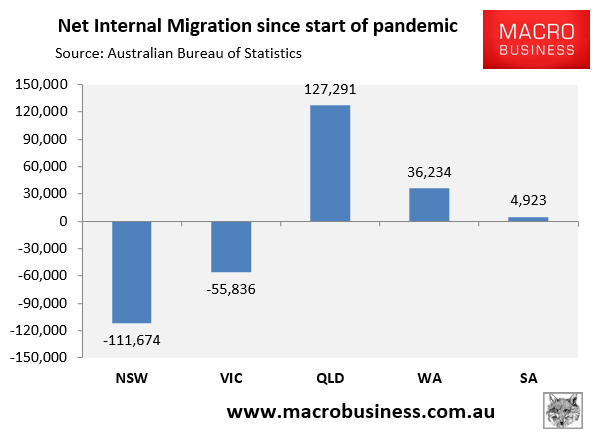The Australian Bureau of Statistics (ABS) released data showing that Victoria recorded a net decrease of 7,606 businesses during the 2022-23 financial year.
The rising cost of doing business in Victoria prompted many firms to relocate interstate or overseas, with rising state taxes being one of the key reasons cited.
By contrast, Queensland experienced the largest net increase in businesses, growing by 11,031 in 2022-23.
The Australian Industry Group’s Victorian director Tim Piper says rising energy costs in the state have also been a factor.
“Some (companies) are able to stay here, (but) it is the continuing reinvestment that is the real problem”, Piper said.
“I know some big companies that are saying this is beyond the pale, they’re not going to be able to pay the level of gas prices especially, and they are having to reconsider their positions in Australia and Victoria”.
The employers’ group has warned that the state government’s electrification push for households will result in even higher costs for customers who remain on the legacy gas network.
Asian Pulp & Paper announced in August that it was halving its production workforce at its Box Hill manufacturing facility in Melbourne’s east, outsourcing some brand manufacturing offshore, and relocating equipment to Indonesia.
At the time, the company stated that the move was “necessitated by the challenging macro-economic environment, including unsustainable energy costs, among others”.
There are two key reasons why Victoria was the only jurisdiction to experience a loss in business counts.
First and foremost, the Victorian government’s draconian Covid lockdowns likely shuttered numerous enterprises, particularly those that are small and focused on people-serving (think cafes, personal trainers, stores, and so on).
Second, the Victorian government introduced a payroll tax surcharge in the 2021-22 State Budget as part of a mental health and wellbeing levy, but only for firms with a payroll of $10 million or more.
The 2022-23 State Budget then increased payroll taxes on these same enterprises as part of a 10-year Covid debt levy to help repay the government’s record borrowing during the pandemic.
I recently chatted with someone who works in business exceeding the $10 million threshold. They stated that their company was preparing to relocate its head office from Melbourne to Brisbane, where payroll taxes are lower.
The Victorian Government’s proposed increases to WorkCover premiums, which are borne by companies, risk driving more enterprises out of the state.
WorkCover is required if the actual or anticipated employee salary exceeds $7,500, or if apprentices and trainees are employed.
Changes to the required plan were announced in May 2023, with premiums rising by 42%, from 1.27% to 1.8% of a company’s employee pay.
The Victorian Parliamentary Budget Office predicts that the changes will cost businesses $17.8 billion over the next decade.
ANZ CEO Shayne Elliot recently described Victoria as “one of the toughest” places to do business.
The ABS data on firm counts appears to support these claims, with the state government effectively driving enterprises north, particularly to Queensland.
This has also been replicated by the internal migration data from the ABS, which shows the great migration north:


